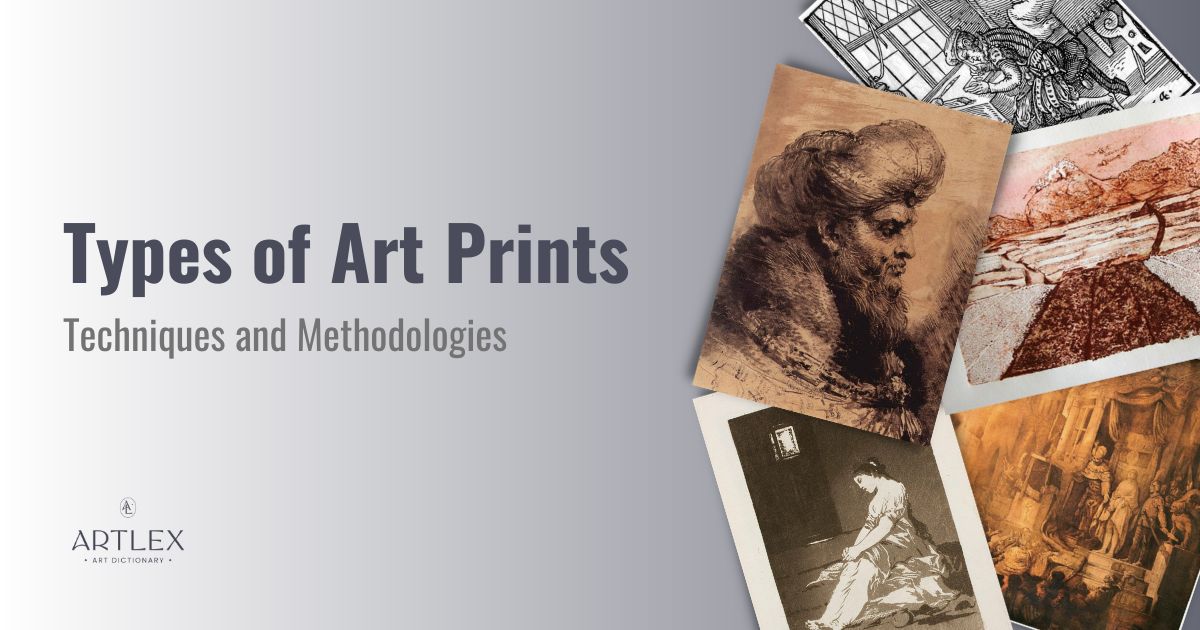
There are many types of art prints an artist can choose to use. Printmaking techniques like etching and engraving have been around for centuries, while techniques such as c-type printing are relatively new. Each type of print lends its own unique style, offering different textures and tones.
Below, we discuss the various print types and cover how printing revolutionized the world. Then, we discuss considerations when choosing a paper on which to print a piece of art. Finally, we answer a few of the most common questions asked about printing art.
What Is an Art Print?
Art prints are images that printers or artists create using a hard surface, such as wood or a metal plate, known as a matrix. Traditionally, the artist engraves or inks the matrix, then presses it onto paper using a printing press.
Methods to create high-quality art prints vary significantly, allowing artists to create distinct styles and appearances. Regardless of the method, though, artists create a limited number of prints. After completing the set number, they destroy the plate, preventing any further prints from being created.
12 Types of Art Prints
Printmaking techniques range from traditional to modern, each creating a unique image.
1. Aquatint
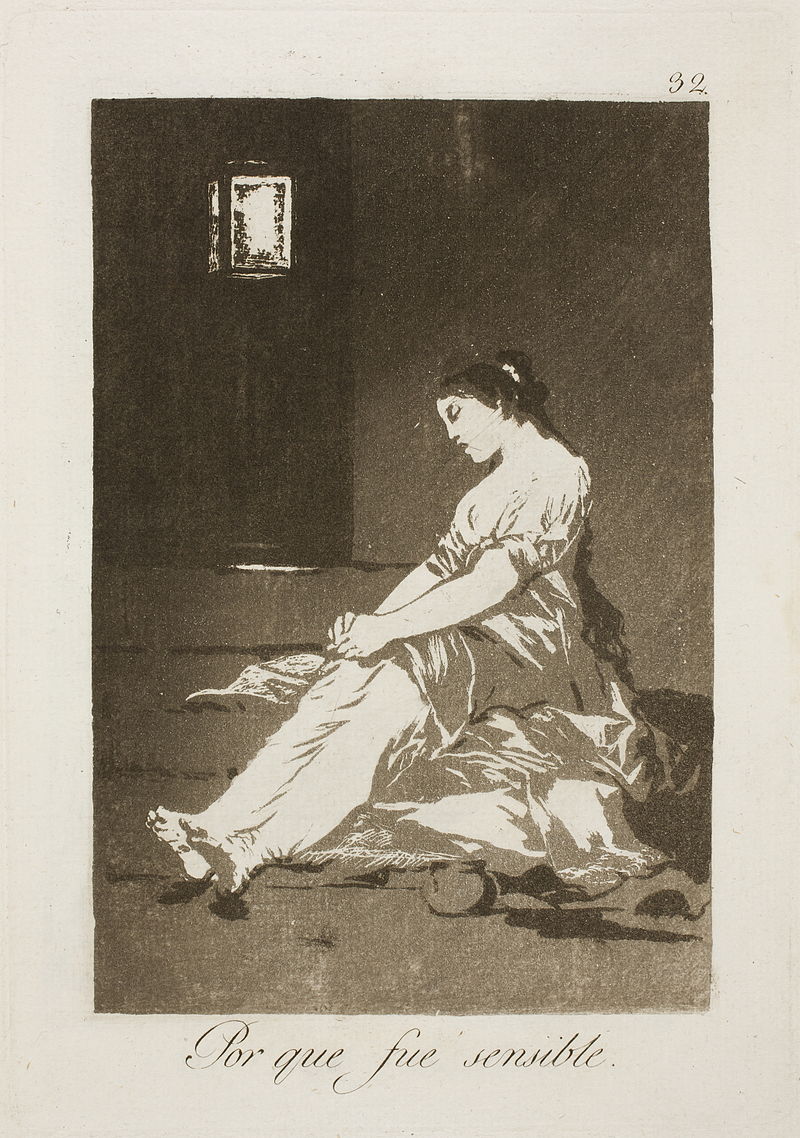
Aquatint is an intaglio technique similar to etching. With an intaglio technique, the artist uses a knife or acid to cut the image. Then, they apply ink to the recessed areas of the plate. The result is an image that stands up from the paper. So, if you run your fingers over it, you can feel the inked surface.
It specifically relies on fine particles of acid-resistant materials, usually powdered resin. The artist uses them to create the image on the plate, which is subsequently put in an acid bath.
The acid cuts into the plate between the grains of resin, creating a uniquely textured image. Once done, the artist uses the plate to make their print. The result is a mass of tiny dots rather than clear lines. These dots make the print look textured and a little blurred rather than defined, similar to painted watercolors.
Printmaker Jan Van del Vede invented the aquatint technique in 1650, but it seemed to disappear from the art world for a long time after that.
It wasn’t until the 18th Century that it reemerged when British artists looked for ways to recreate watercolor paintings. Famously, the Spanish artist Francisco Goya used aquatint in some of his etchings, including Los Caprichos (1799), Los Desastres de la Guerra (1810–19), and La Tauromaquia (1816).
2. Collagraph
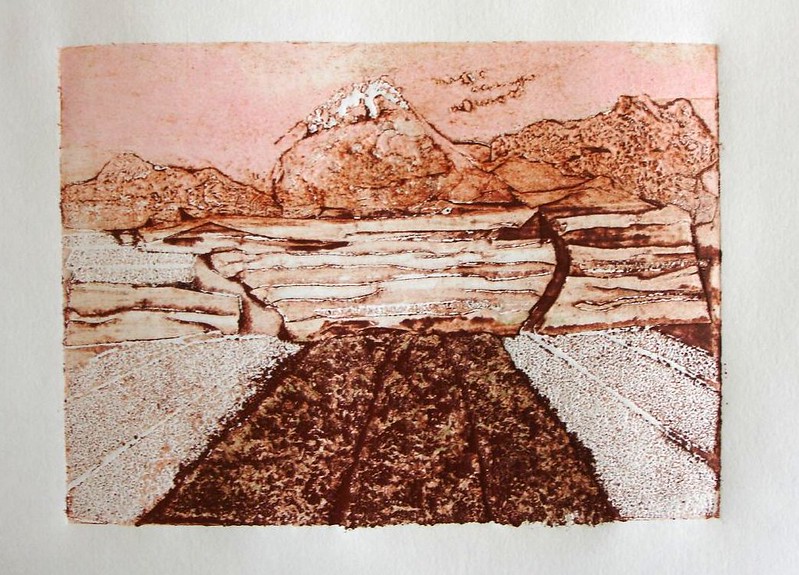
Collagraphy is a printmaking process that artist Glen Alps coined in 1955. In it, the artist applies various materials to a flat surface, often cardboard or a thin wood plate. Then, they ink the image and press it onto another material using hand tools or a press.
Artists often use leaves, strings, sandpaper, grass, and other fibers to create collagraphs, making complex images with fascinating textures and tonal effects. However, because the wood or cardboard plate is typically very delicate, collagraph plates may not allow multiple impressions like other printmaking techniques. That means collographs are often mono-prints.
Evidence of collagraphy existed long before Alps coined the term. Early collographic techniques are present in works from the early 19th Century. Still, it was Alps, an art professor at the University of Washington, who popularized the form with Chickens, Collograph #12, displayed at the Brooklyn Museum’s National Print Annual.
Since then, many notable artists have used collagraphy, including Claire Romano, Dean Meeker, and John Ross.
3. C-Type
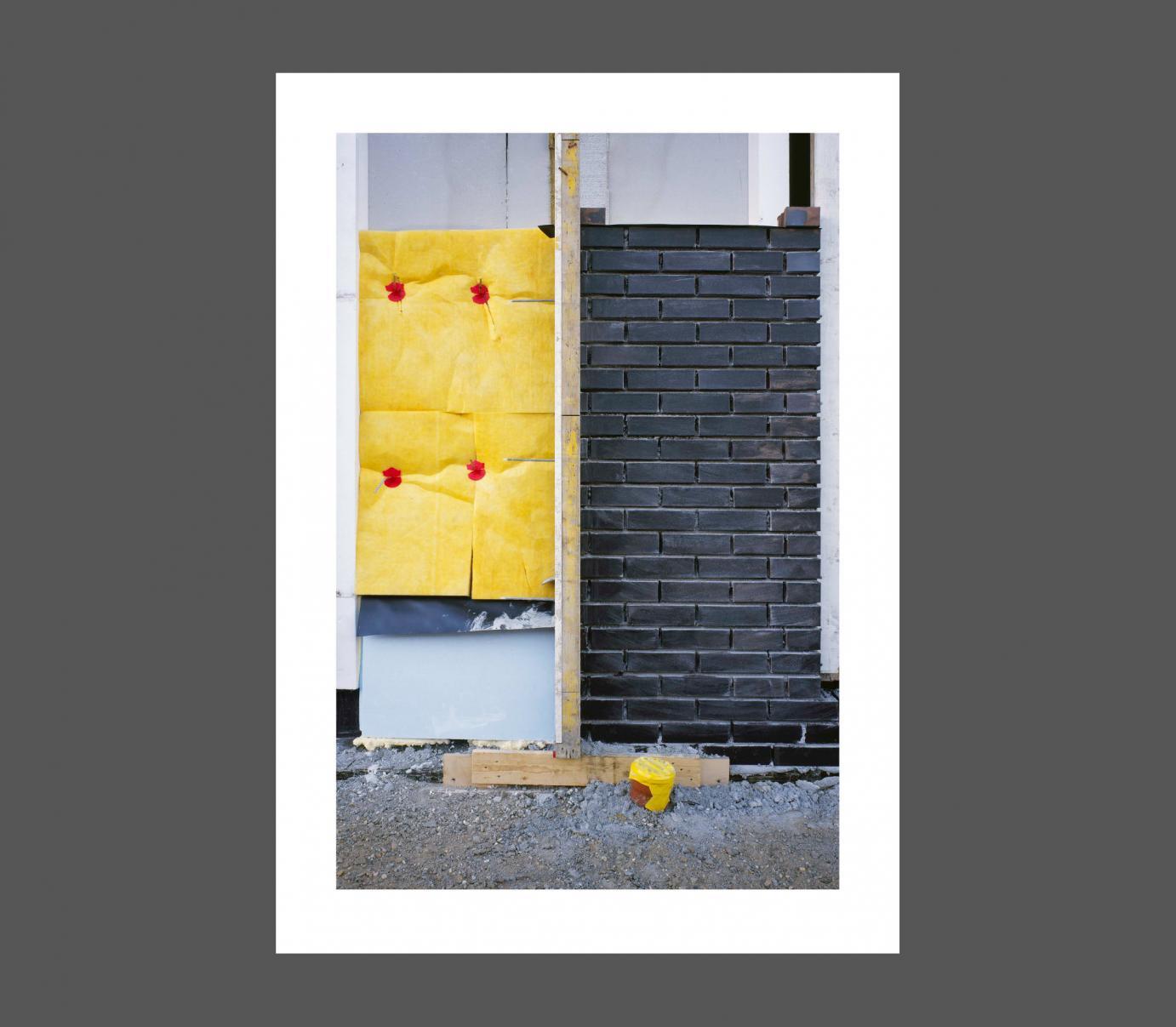
C-type, or Chromogenic fine art prints refer to prints from film negatives. This printing technique gets its name from c-type or chromogenic paper. Kodak originally trademarked the method, but now we use the term generically. C-type paper contains three emulsion layers, each sensitive to one primary color.
After the artist exposes the image on the paper, they place it in a chemical solution. Each layer of the paper reacts to the solution differently to create a full-color print.
Today, this darkroom technique has mostly fallen out of fashion. Instead, modern c-type prints are usually from digital image files. Digital c-type prints rely on lasers or LEDs to expose the colors on photosensitive paper.
Unlike inkjet photo prints, c-type prints feature color tones that meld into one another. Proponents of this type of printing say that makes them superior to inkjet digital prints. For this reason, many artists insist on using c-type prints for their photography.
4. Engraving
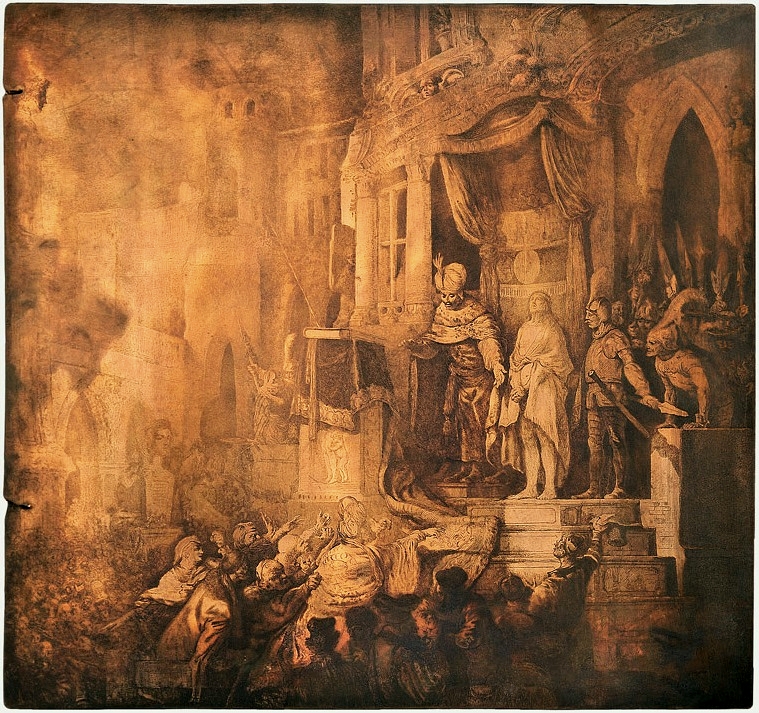
Engraving is a prime example of an intaglio technique. With this printmaking process, artists carve directly into a metal plate using a tool called a burin. Usually, the plate is made of copper and the burin of steel.
Depending on the pressure of the artist’s hand, the burin will make shallow or deep cuts. The result is a deliberate appearance with strong lines and clean edges.
Engraving is favored among the printmaking processes because it allows for several repetitions before the plate wears. Artists like Pablo Picasso, Alberto Giacometti, and Joan Miro used engraving to create limited-edition prints.
For example, Picasso created his Minotauromachie for a select group of 55 friends and patrons. Today, due to the work’s private nature and technical brilliance, the print is valued at over $1 million.
See our full guide on Engraving Printmaking.
5. Etching
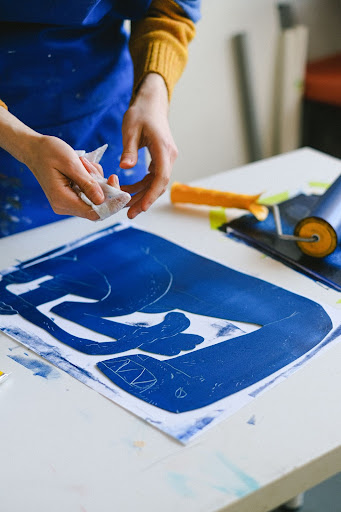
We credit Daniel Hopfer with inventing etching sometime in the late 1400s or early 1500s. He used it as an alternative to metalwork when decorating armor. Unlike that method, etching was relatively easy to teach to artists, making it more affordable.
In etching, artists incise a design onto a metal surface covered in acid-resistant paint before soaking the plate in acid. The acid bath permanently transfers the cut areas, usually the background motif, but leaves the paint intact.
The artist then typically darkens the etched area. Etching is often linear, but it allows for fine details and contour. You’ll find it in some of the works of Rembrandt, Francisco Goya, and Pablo Picasso.
Rembrandt’s most famous etching is arguably The Three Crosses. Created in 1653, it portrays Jesus Christ on the cross between two thieves who were crucified with him.
See our full guide on Etching.
6. Giclée
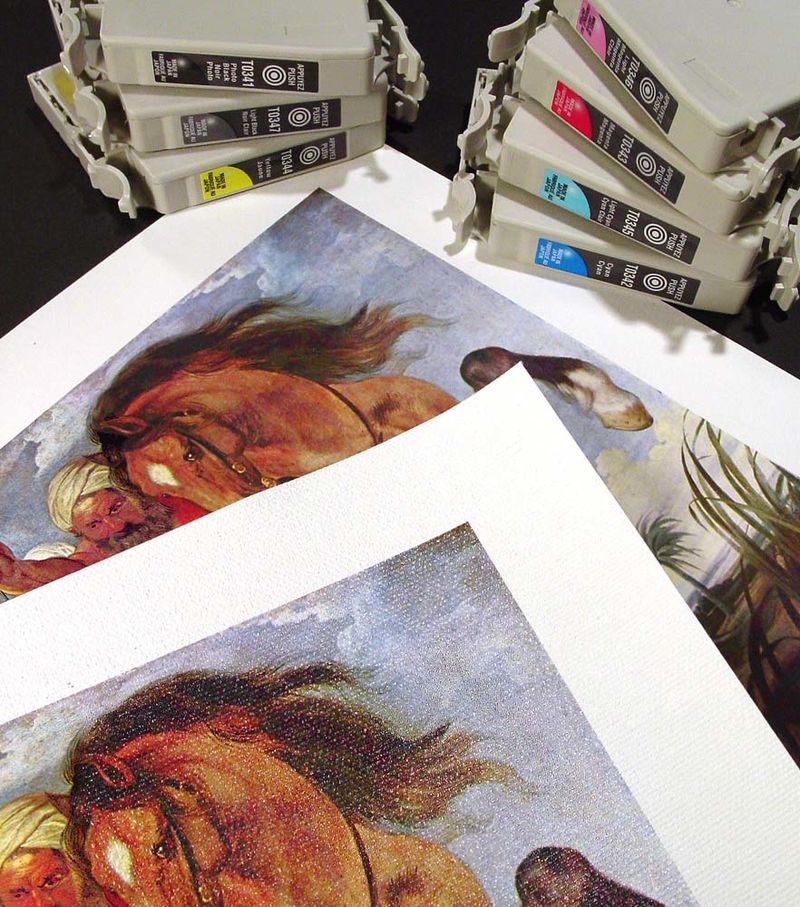
Giclée is type of fine art print is made by large format digital printers, which use small sprayers to precisely apply printing ink and create a quality print from a high-resolution digital image. The word Giclée is a French term meaning “to spray,” and it’s pronounced “zhee-clays,”
Jack Duganne named this printmaking process in 1991. His company, Nash Solutions, was printing fine art prints using a specialized printer that sprayed ink like an airbrush to achieve an extremely accurate reproduction.
Giclée is often used for limited edition prints of fine art. As long as a high-resolution image file of the artwork exists, either through a photograph or scanner, the artist can produce a giclee print to display or sell their work.
These prints are popular with consumers and artists today because they are long-lasting. Giclée prints can last 100 years or more if you care for them properly. They are also very accurate to the original artwork, making them ideal for reproductions and displaying digital pieces.
7. Posters
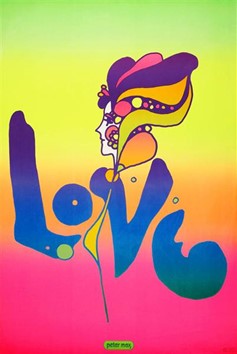
Posters are paper prints. A printmaker applies an image to a large piece of paper to display, usually for marketing purposes.
Though colorful posters didn’t become commonplace until the middle of the 20th century, posters have been around for a long time. In 1477, in England, one of the earliest printmakers, William Caxton, printed one of the first known posters. It was to advertise a handbook for the priests of Salisbury.
Posters come from various printmaking techniques, including the lithographic press, screen printing, and digital printing. Today, most come from digital tools. They advertise movies, musical performances, books, and more.
8. Linocuts
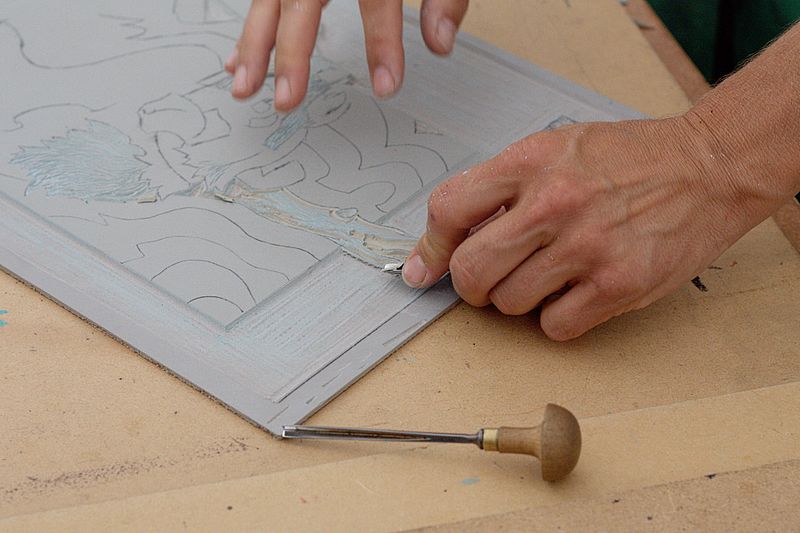
Linocuts are sometimes called “modern woodcuts.” Rather than using wood, these prints rely on linoleum sheets. The artist uses a knife or chisel to carve into a linoleum sheet, creating a mirror image of what they’re ultimately trying to create.
This technique has a few advantages to woodcuts. For one, linoleum lacks grain, meaning the artist can create a broader range of effects than they can with wood. It also is relatively easy to work with, allowing the artist to create large decorative prints.
It’s so easy to work with that, for many years, the art industry looked down on linocuts. Yet, when Pablo Picasso and Henri Matisse began using them in the 1950s, views on linocuts changed.
See our full guide on Linocut Printmaking.
9. Lithography
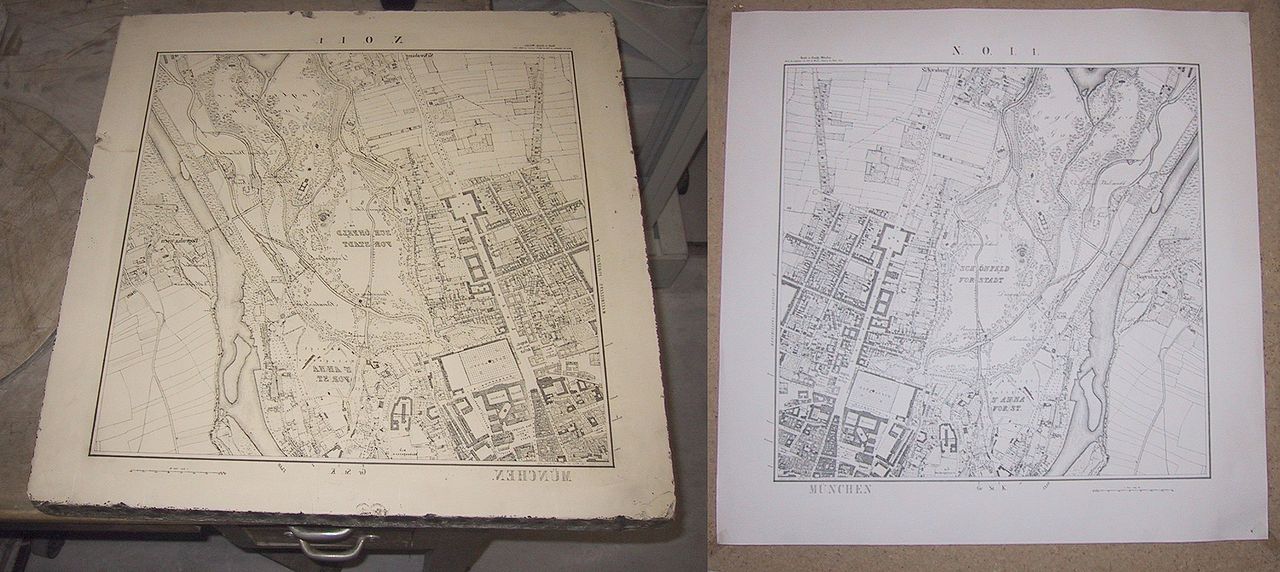
Lithography is a printmaking method Invented in 1798 by Alois Senefelder, and is considered one of the most challenging printmaking methods. Lithography involves drawing directly onto stone or metal using a grease-based medium. Then, the artist treats the stone with a chemical solution, ensuring the image will attract printing ink. The solution ensures blank areas will repel the ink while attracting water.
After that, the artist uses a solvent to fix the image. Then, they dampen the surface with water and apply an oil-based ink. The ink adheres to the image, ensuring it is the only thing that comes through when the stone presses onto the dampened paper placed in the lithographic press.
Initially, lithographers reserved this technique for musical scores and maps, but some fine art prints also come from lithography. Modern commercial lithography uses a similar method. However, rather than stones and oil-based inks, it relies on plastic pieces and polymer coatings.
See our full guide on Lithography.
10. Monotype
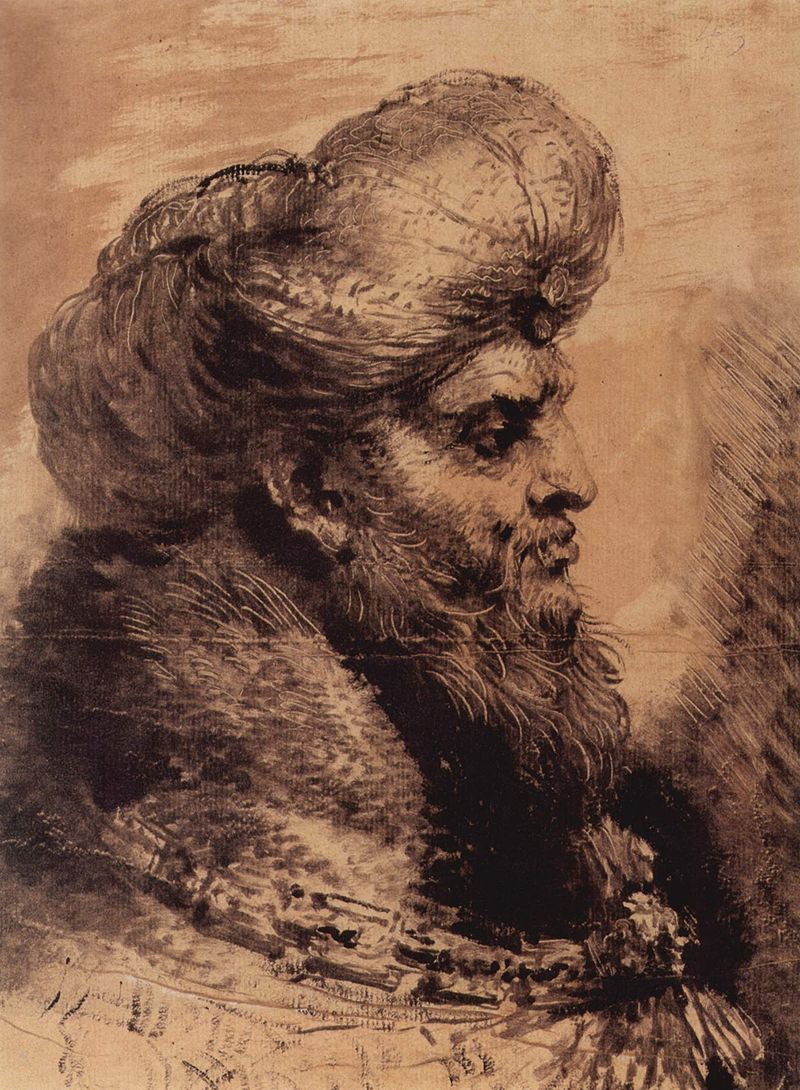
Monotype prints, or monotyping, is a printmaking process where paint or ink is applied directly to a non-porous surface (often copper, acrylic, or glass), and then transferred onto paper via pressure, such as with a printing press, a brayer, or even by hand.
The resulting print is unique, and cannot be recreated exactly, hence the name “monotype”. Sometimes, there is enough ink remaining on the metal to create a second ghost impression. It tends to be far less valuable than the original work.
You’ll find monotypes mixed with lithographs in some of James Rosenquist’s works, such as The Kabuki Brushes and Crosshatch and Mutation. Monotypes are also dominant in some of Edgar Degas’s creations.
See our full guide on Monotype Prints.
11. Screen Print
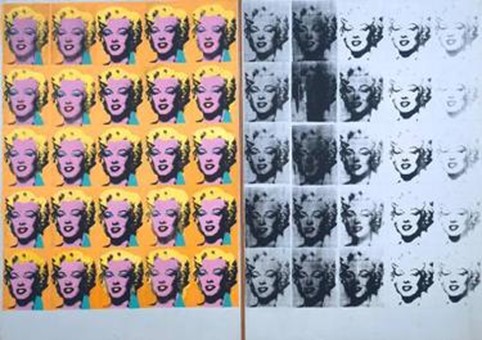
A screen print uses an ink-blocking stencil set on a screen. Printmakers apply ink to the screen, with it selectively passing through the screen to create the final image.
Screen printing is a common commercial practice. It gained immense popularity in the 1960s and 1970s as a staple of the pop art movement. One of its greatest contributors is Andy Warhol, who used it to make the famous Campbell’s Soup and Marilyn Monroe portfolios.
Today, screen printing is still common in the garment industry. Many logo hats, hoodies, and t-shirts rely on silk screen printers.
See our full guide on Screen Printing.
12. Woodcuts
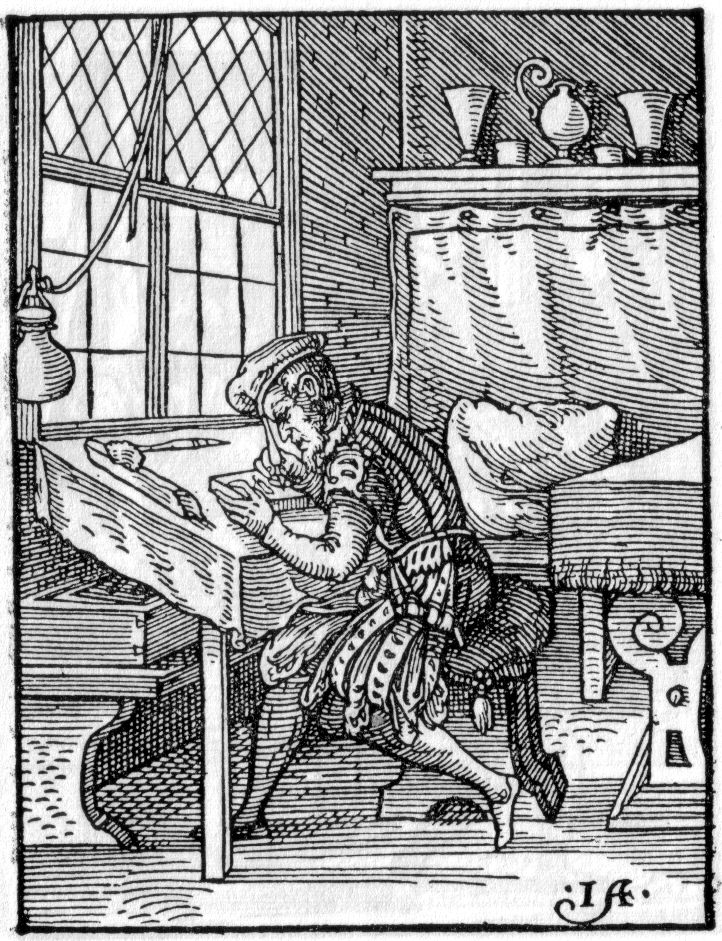
Woodcutting is one of the oldest printmaking techniques. It’s a simple form of relief print in which an artist carves an image into wood that’s then covered in ink. Finally, the artist presses it to a surface, leaving an image behind.
It’s similar to linocutting, but with woodcuts, the wood’s grain plays a significant role in leaving a unique texture.
This technique originated in China and migrated to the west in the 13th Century. Albrecht Durer, a 15th Century German artist, initially popularized it. Later, expressionist artists in the late 1800s, such as Ernst Ludwig Kirchner and Emil Nolde, revived the technique.
See our full guide on Woodcut Printmaking.
Frequently Asked Questions
Below we answer a few of the most common questions surrounding art prints.
Why are prints made?
There are various reasons an artist might make prints. Prints offer a new medium for artists to use as a creative outlet. They also may encourage collaboration within a print workshop that an artist may find appealing. In addition, artists can use prints to document their creative process.
Is a print just a copy?
No, a print is not just a copy. In fine art, printmaking often involves working with a print shop full of highly skilled technicians. Though they’re making a reproduction, it’s usually a limited amount set for sale through a gallery or publisher.
How do digital prints compare to traditional methods?
Compared to traditional methods, digital prints allow for fast turnaround and the ability to personalize each version of a project with ease. However, the handmade nature of traditional prints usually means they’re worth more.
Final Thoughts
There are many types of art prints that an artist can use to create their work. Each offers a unique style and appearance, ensuring an individual’s creativity can be expressed. For instance, an artist might want to play with tone and textures in a collagraph or prefer the clean lines of a linocut. Regardless of what they’re looking for, there’s a traditional printmaking technique that offers the right tone for their art.
Finding the right tone through a printmaking technique allows the artist to communicate their message more clearly. These messages do their part to shift and change the world. And, as we’ve pointed out, art’s messages wouldn’t reach the masses were it not for the art of printing.
